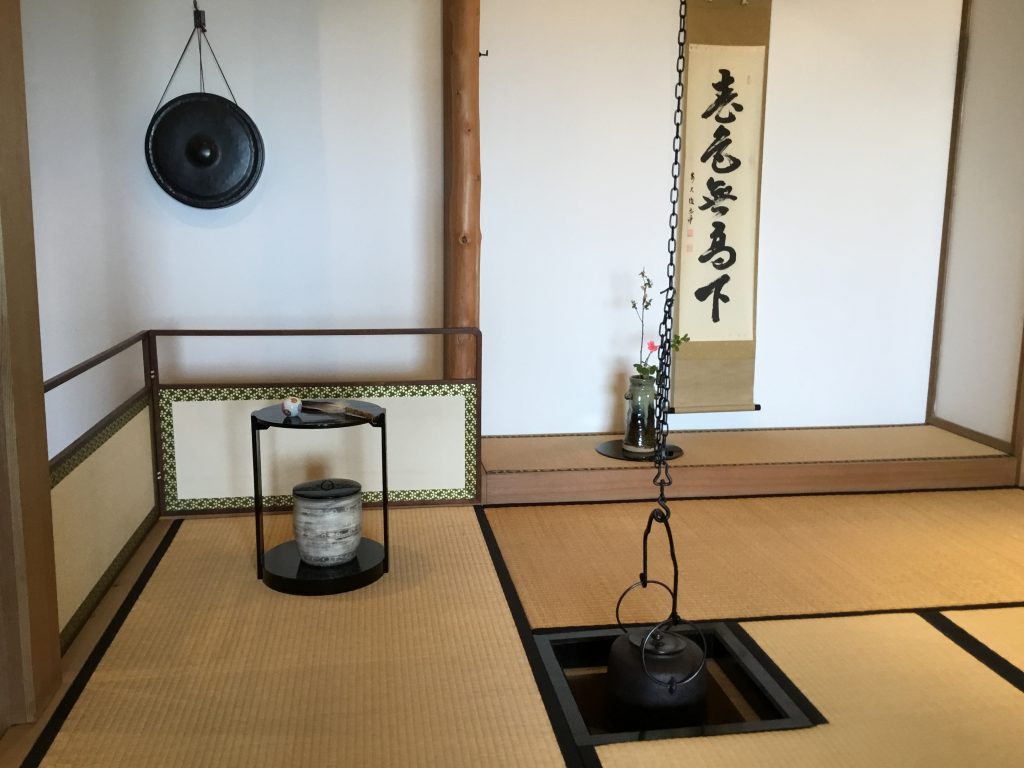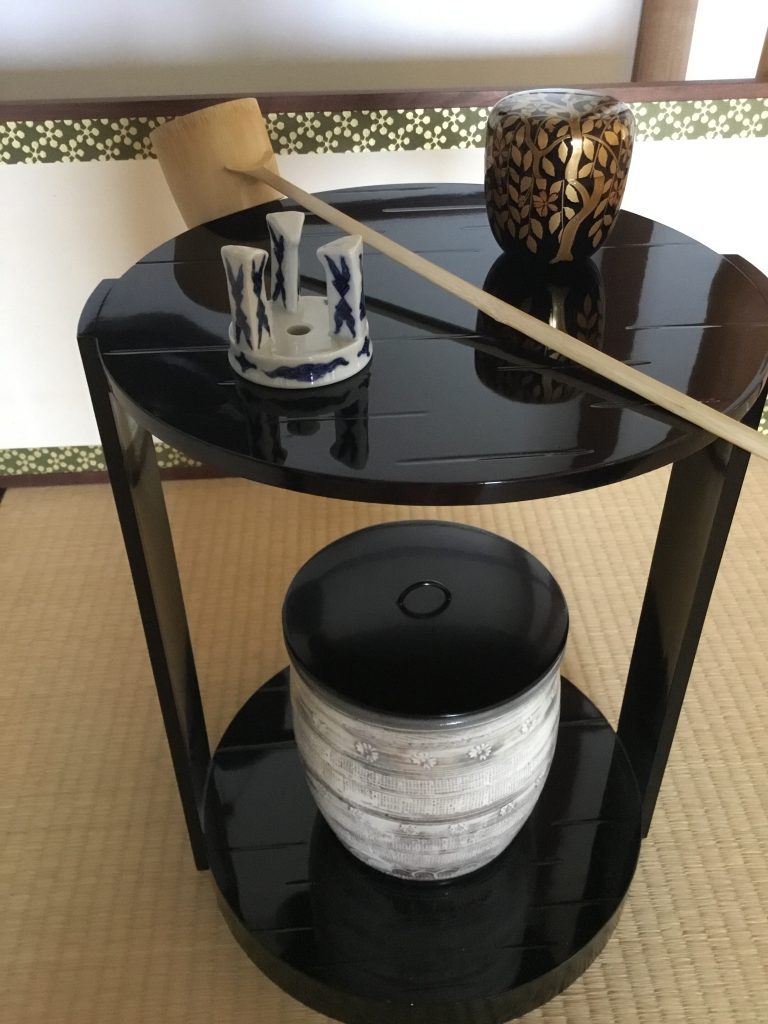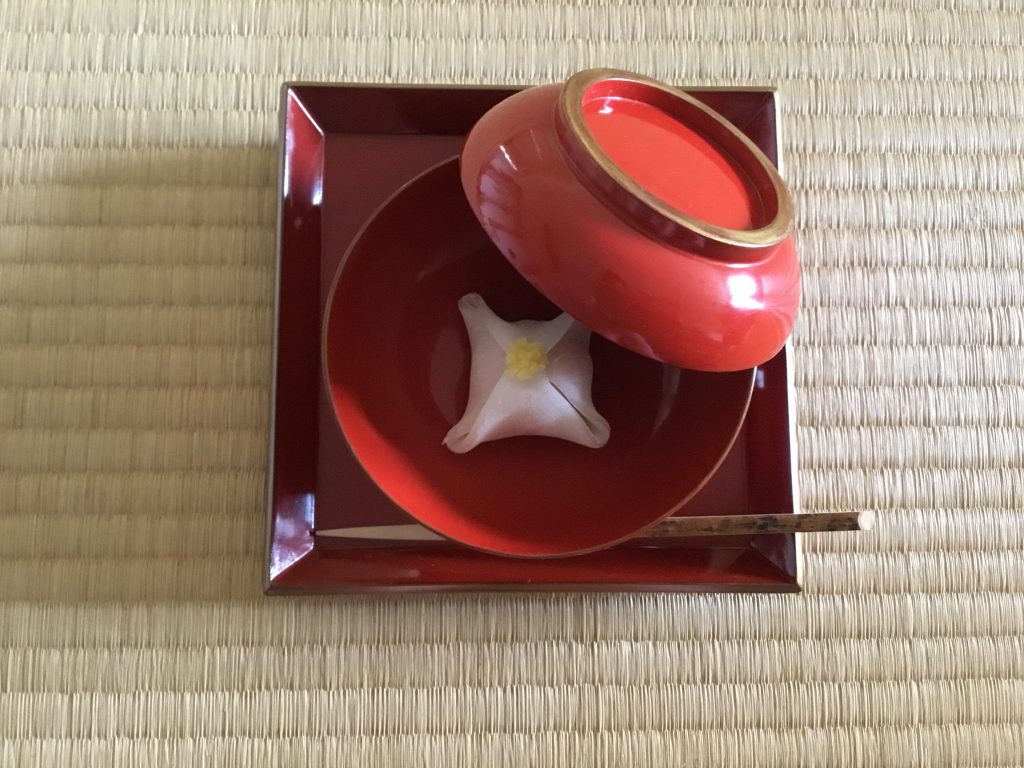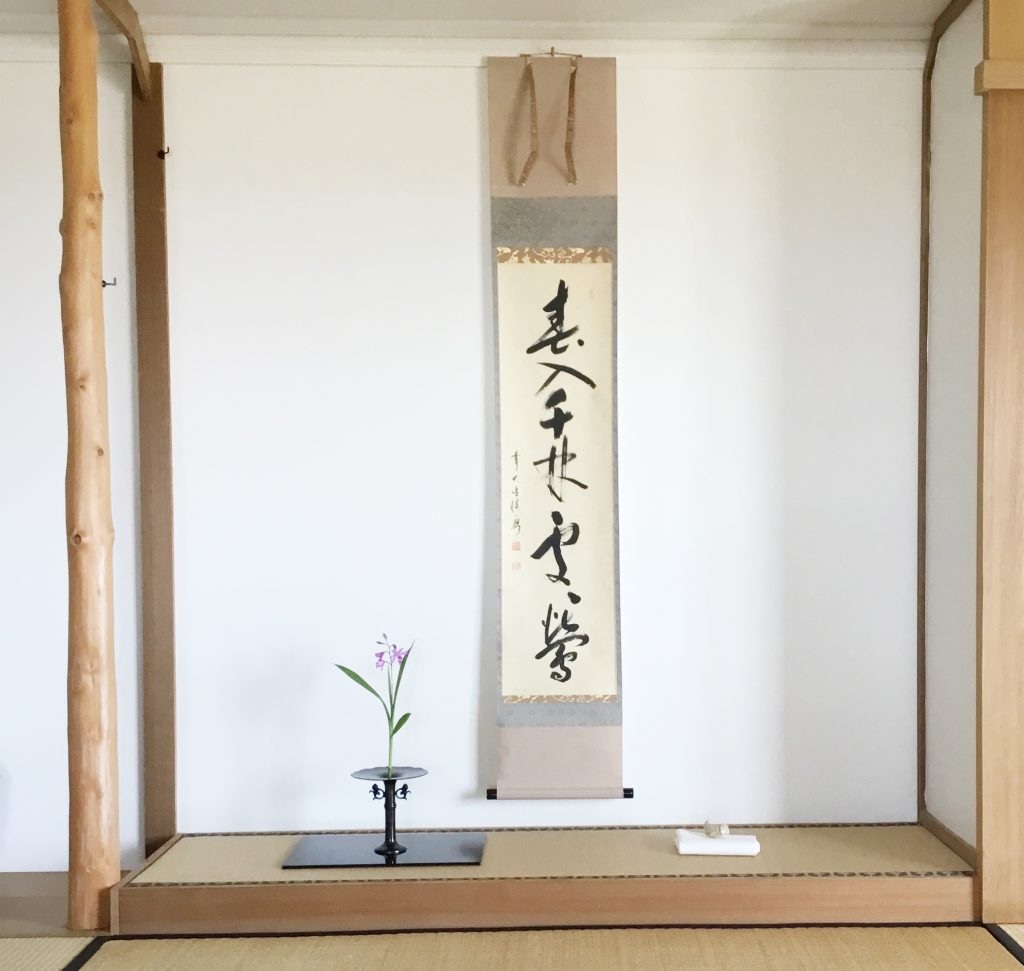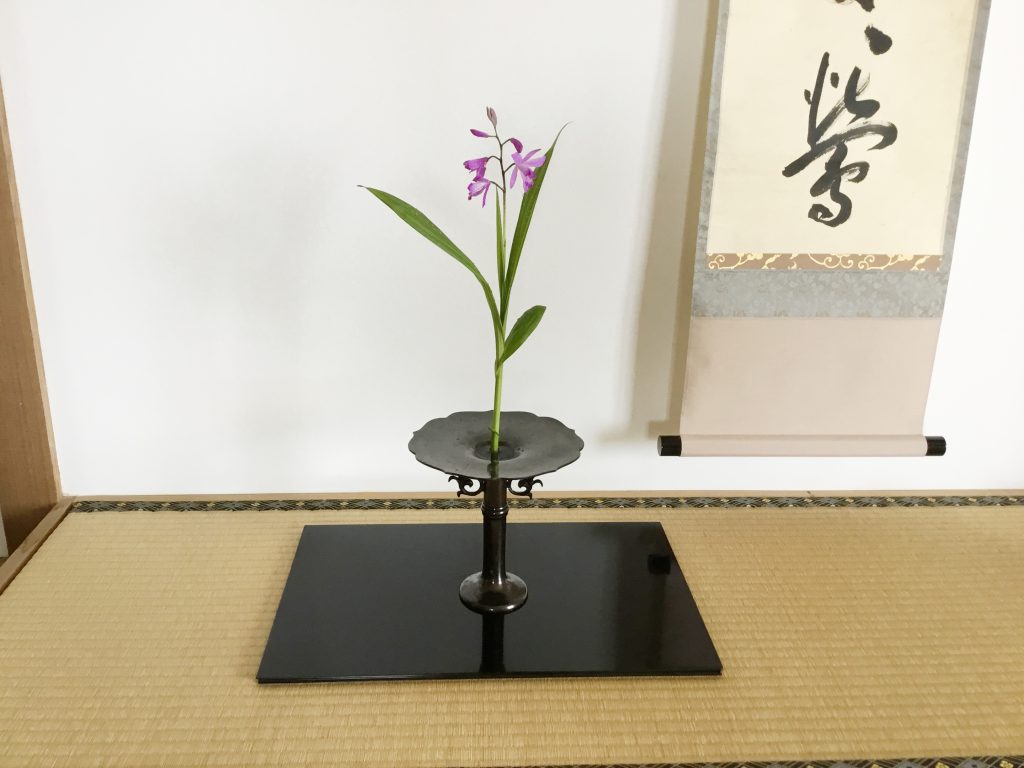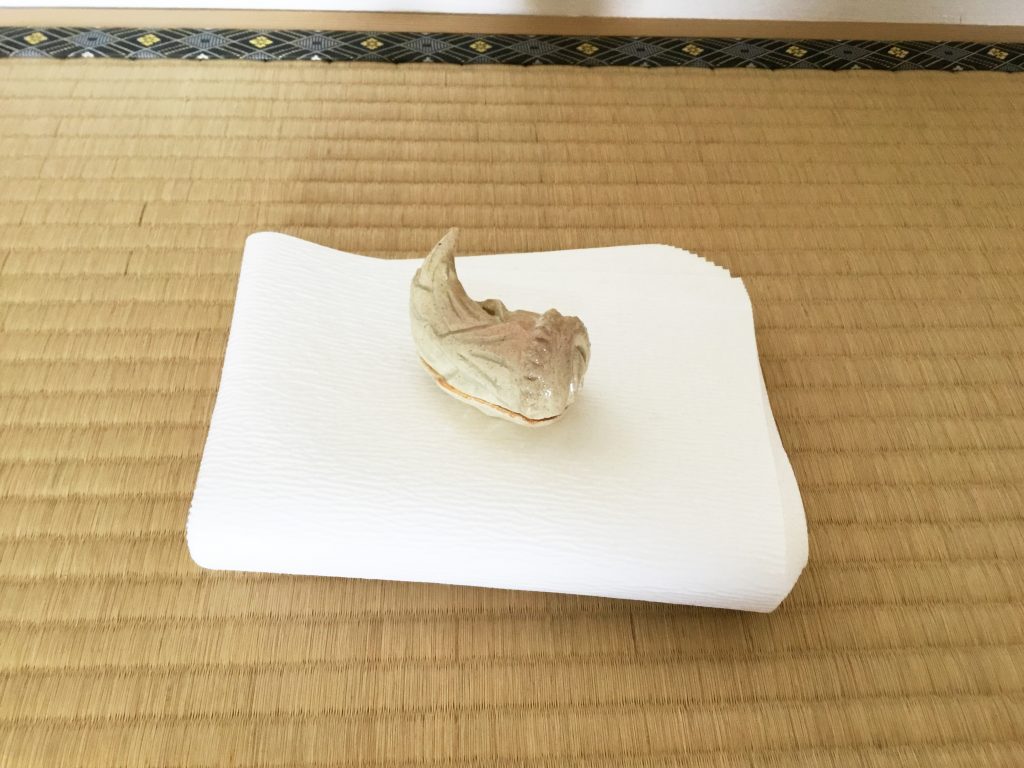It was really difficult to cope summer heat before air conditioning. Chajin tried very hard to make their guests feel a little cooler by special 点前 temae and utensils .
Here are some examples ;
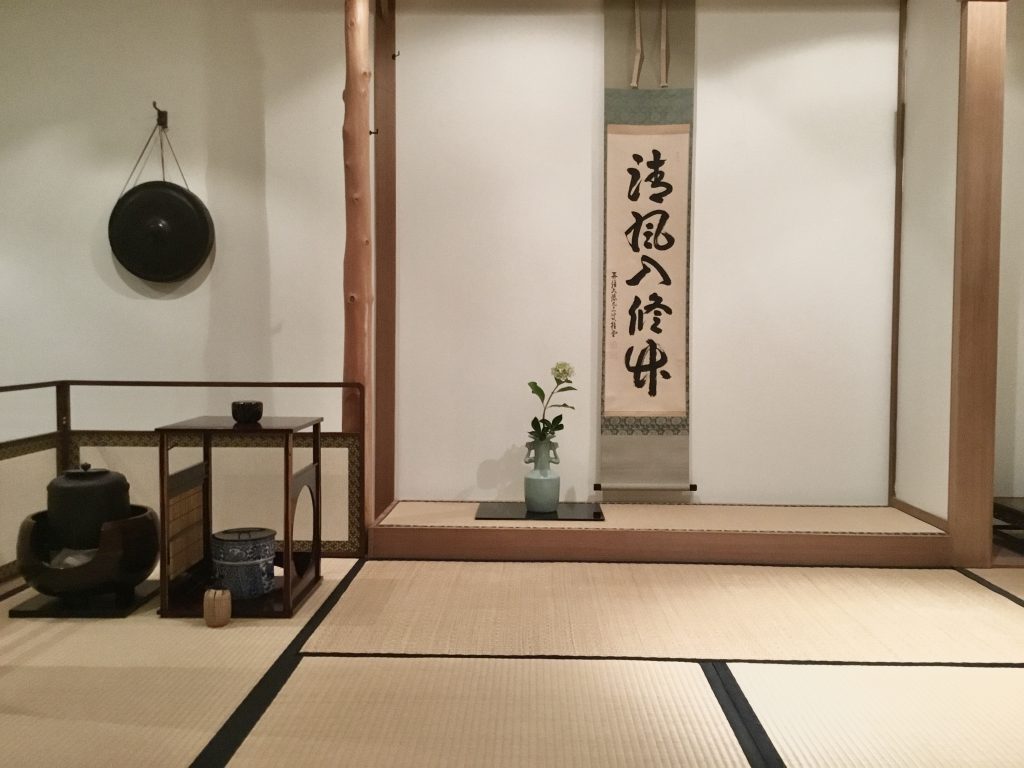
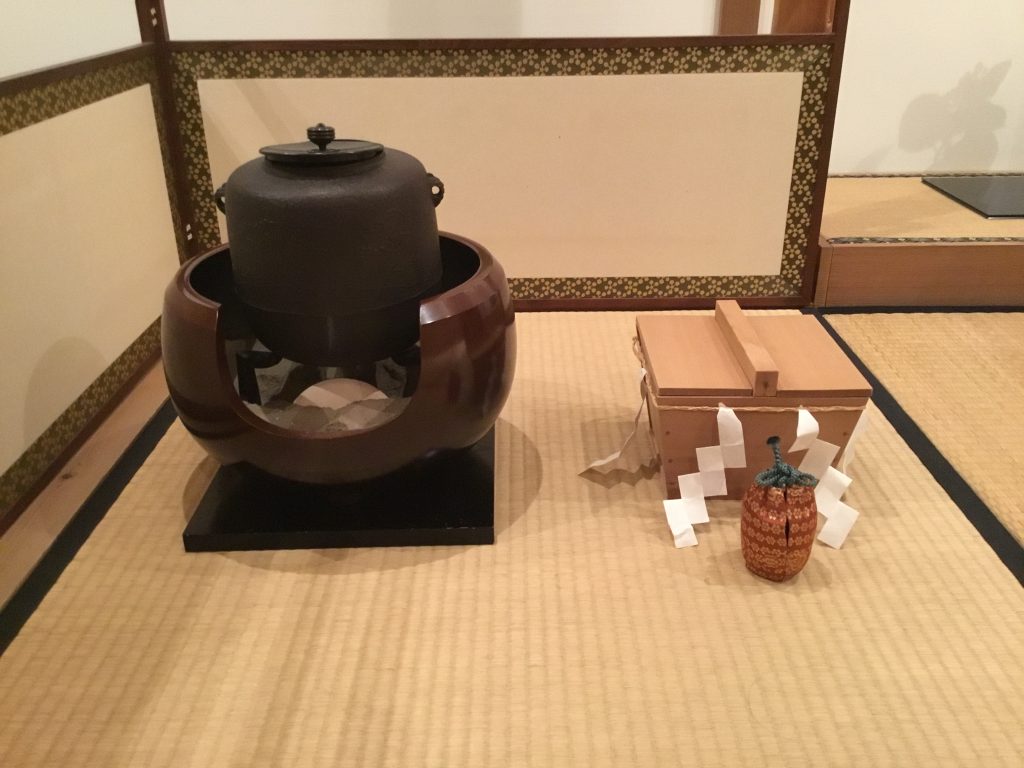
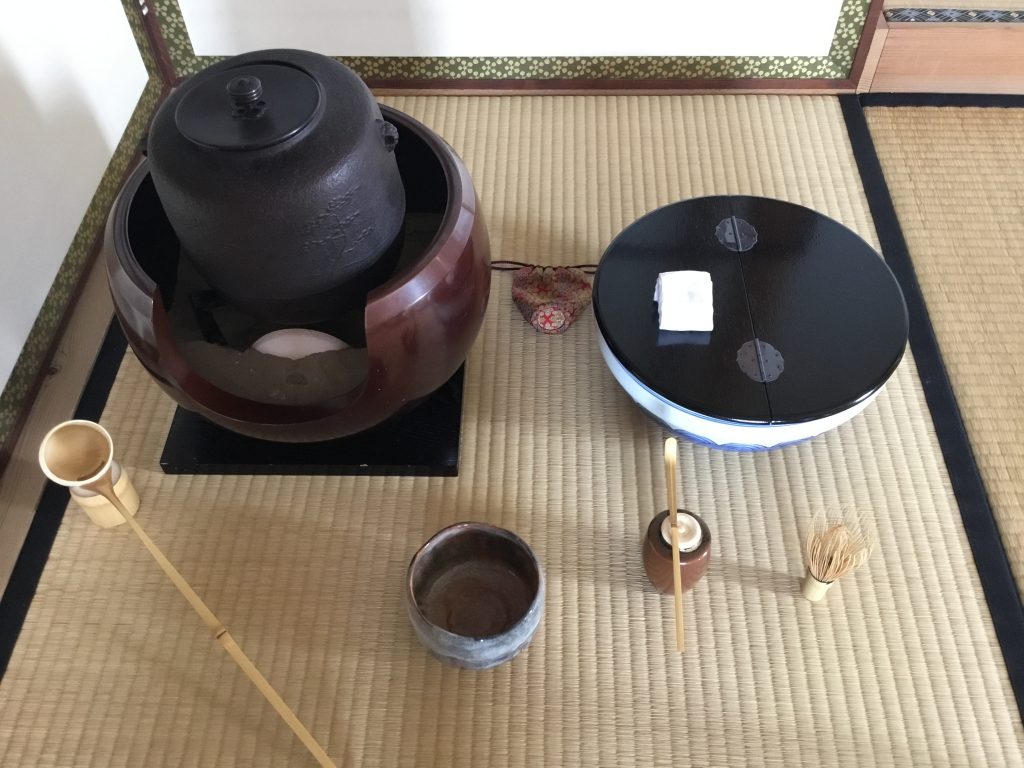
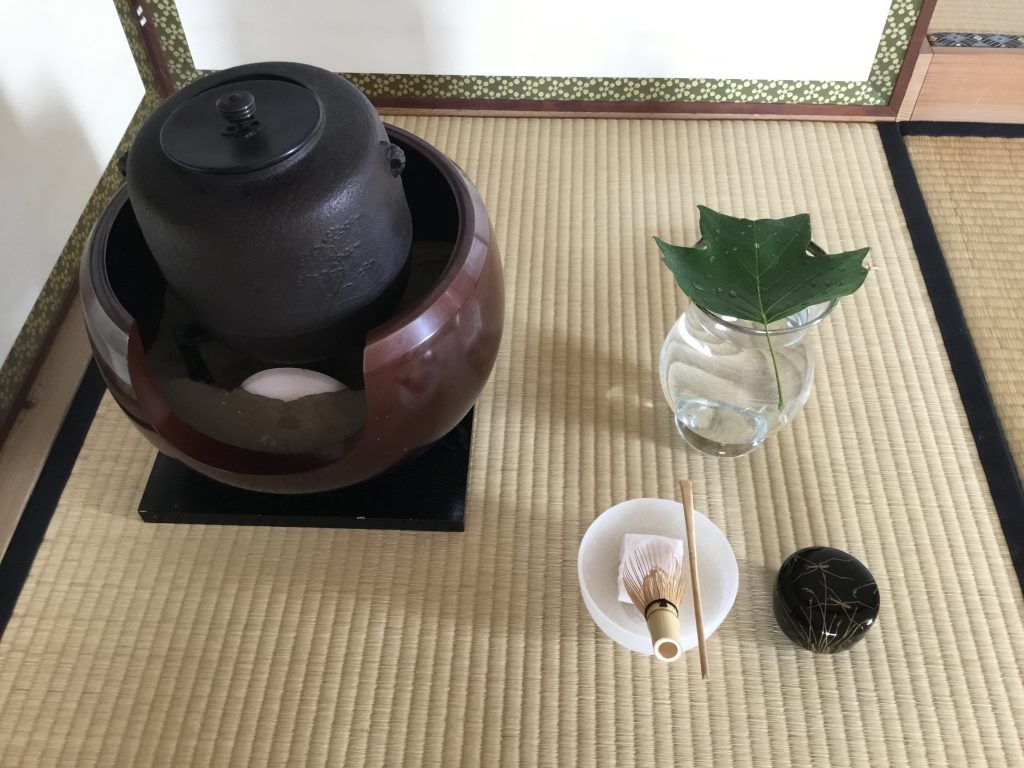
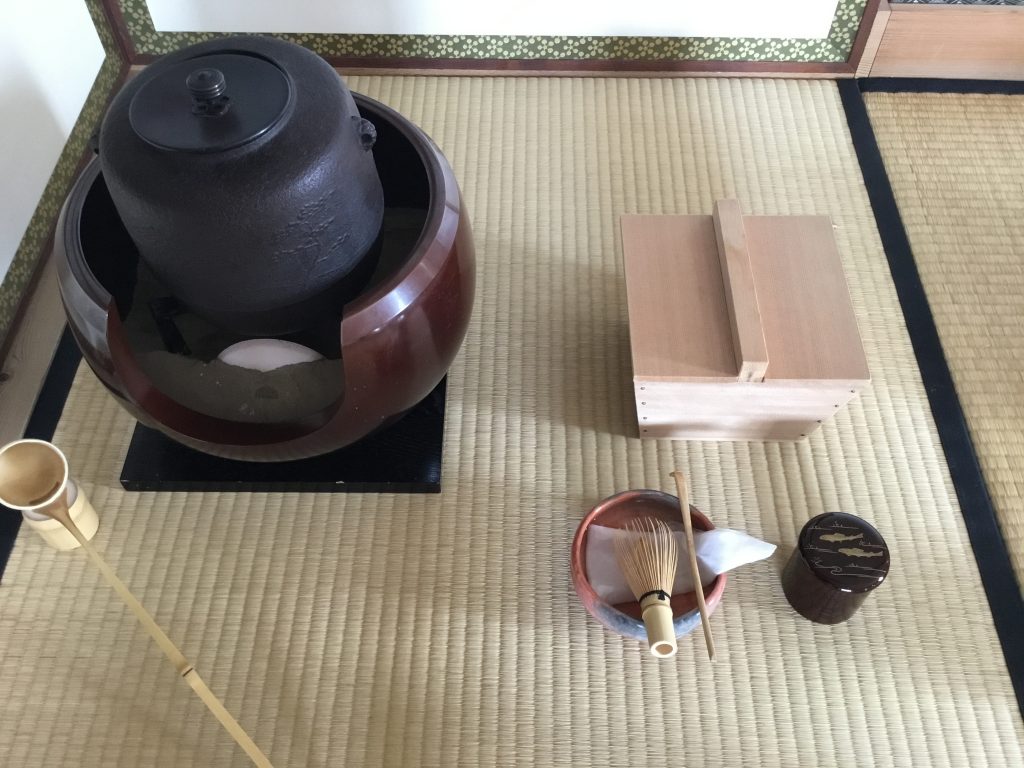
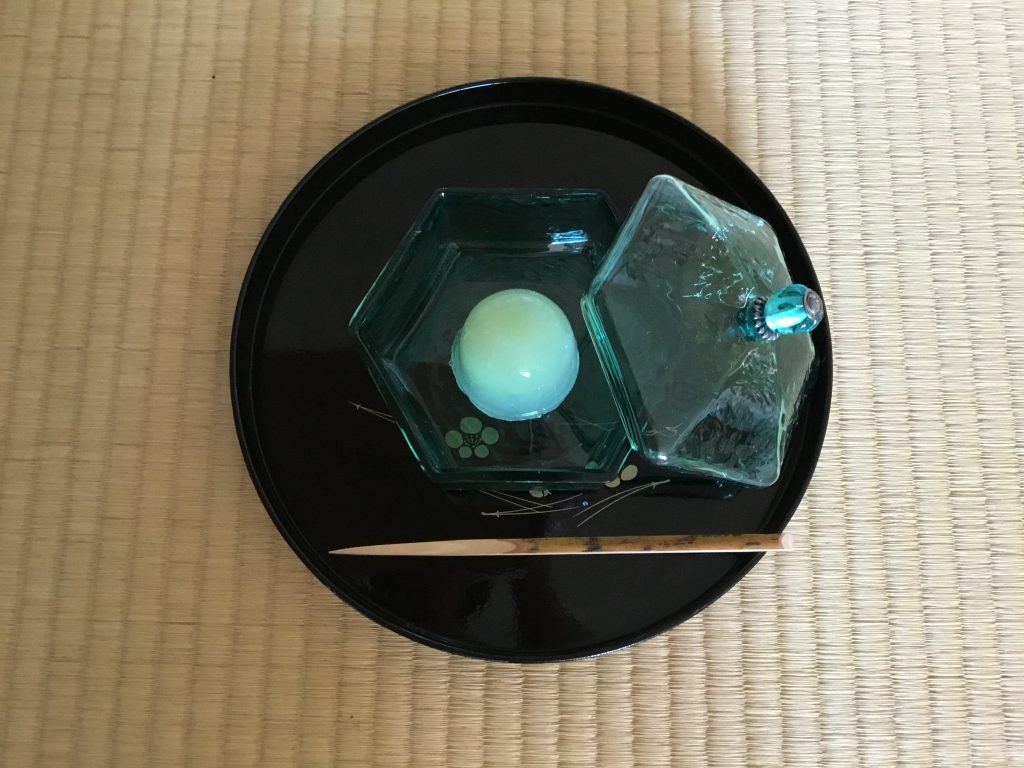
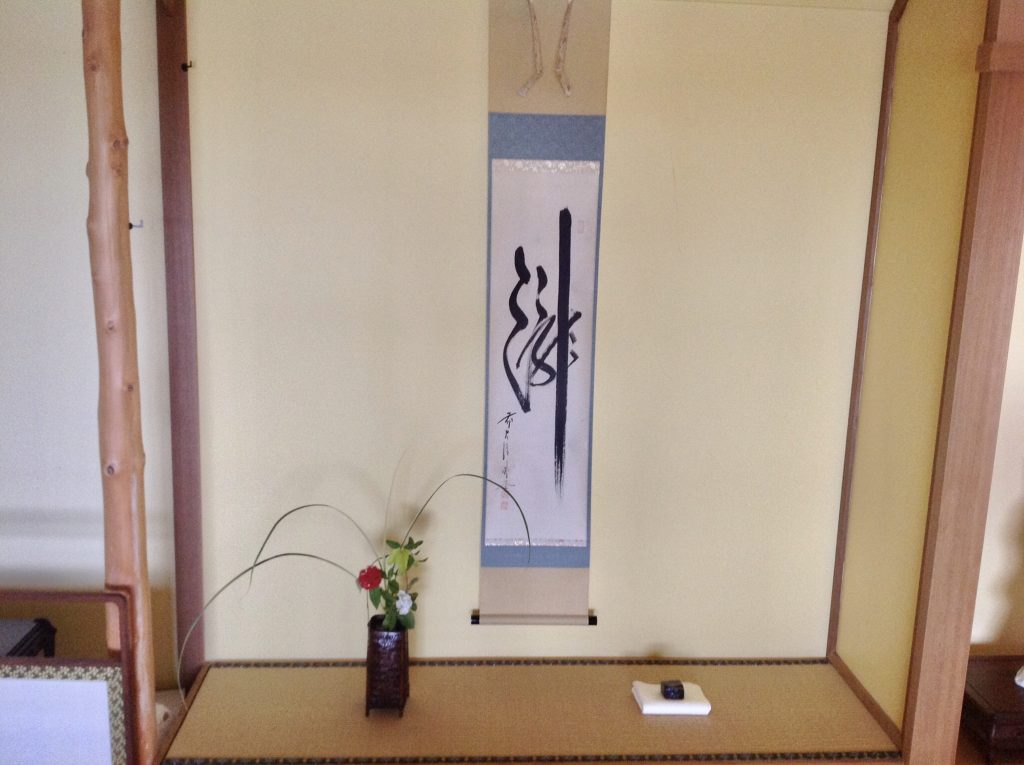
It was really difficult to cope summer heat before air conditioning. Chajin tried very hard to make their guests feel a little cooler by special 点前 temae and utensils .
Here are some examples ;







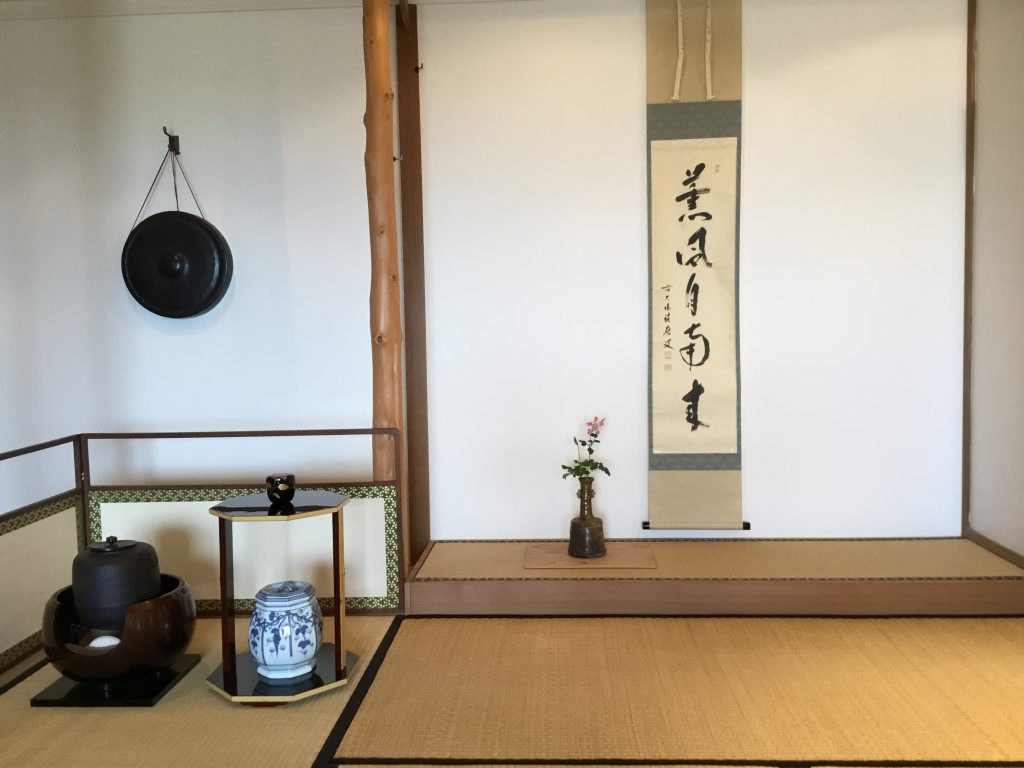
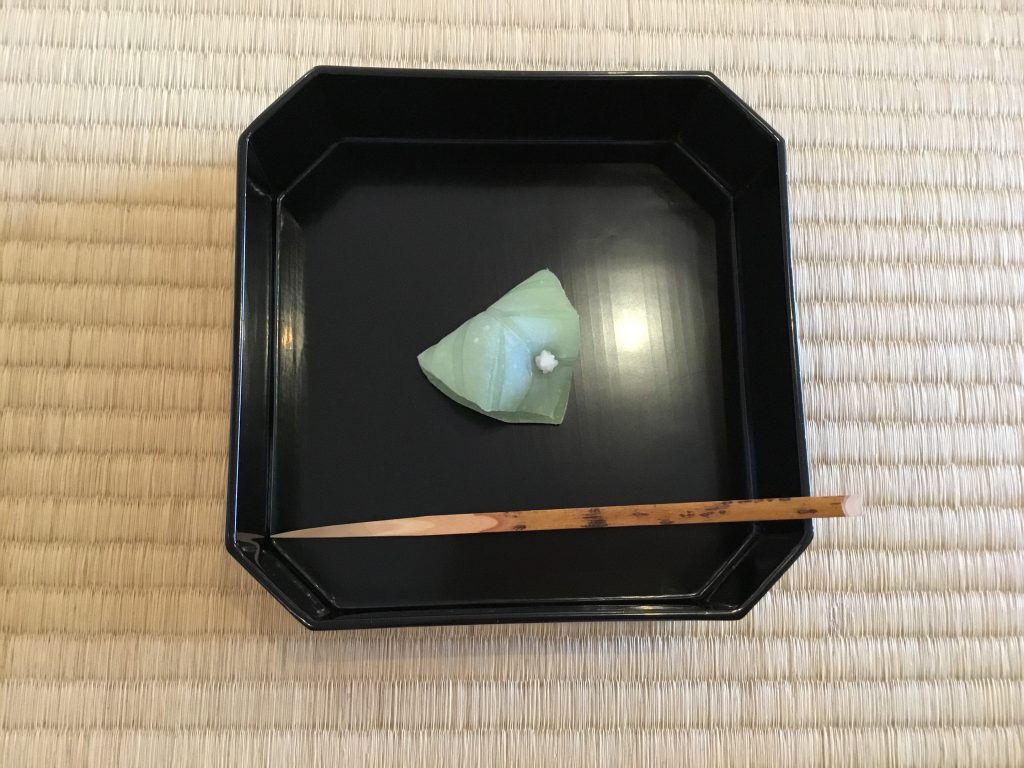
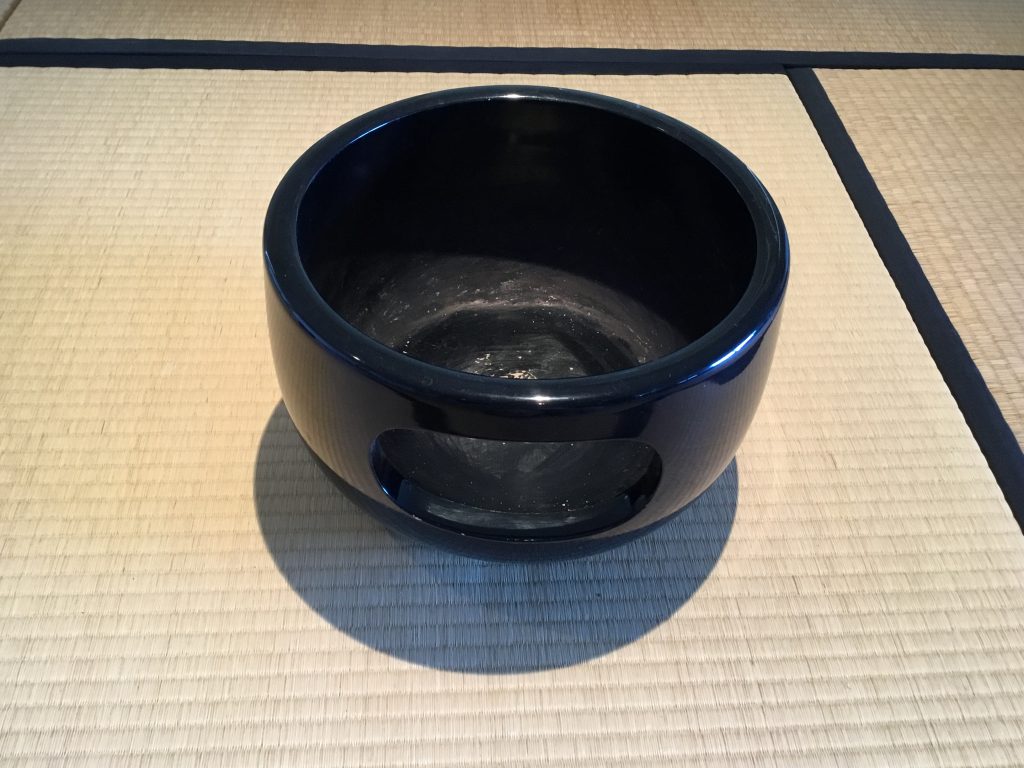
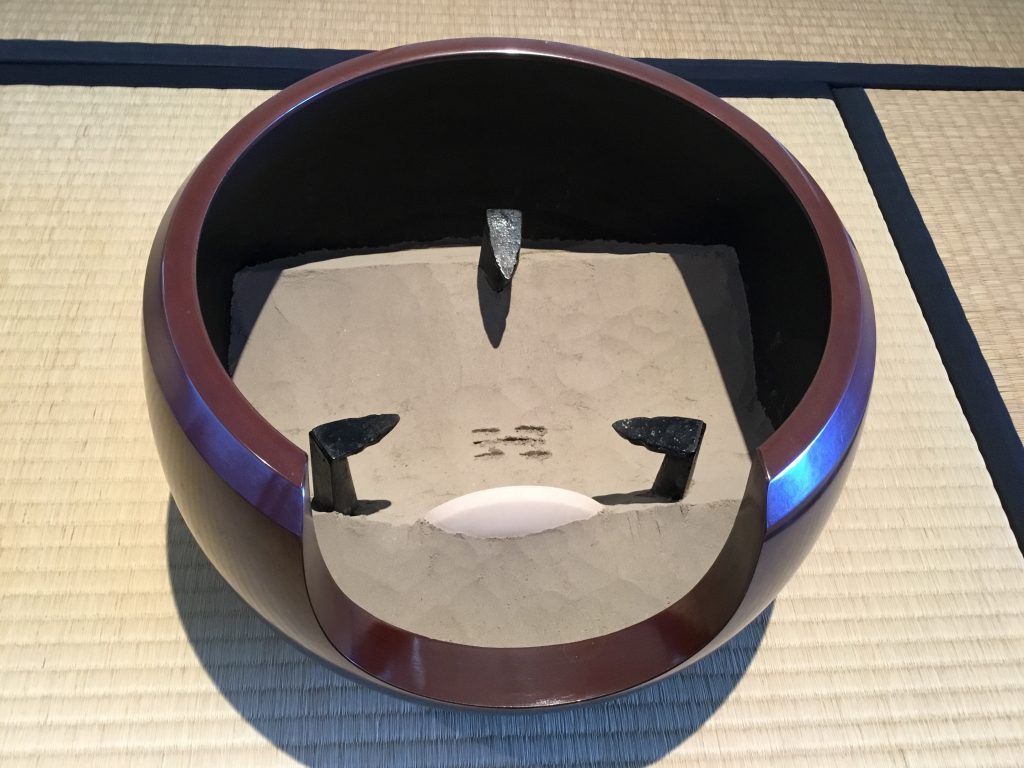
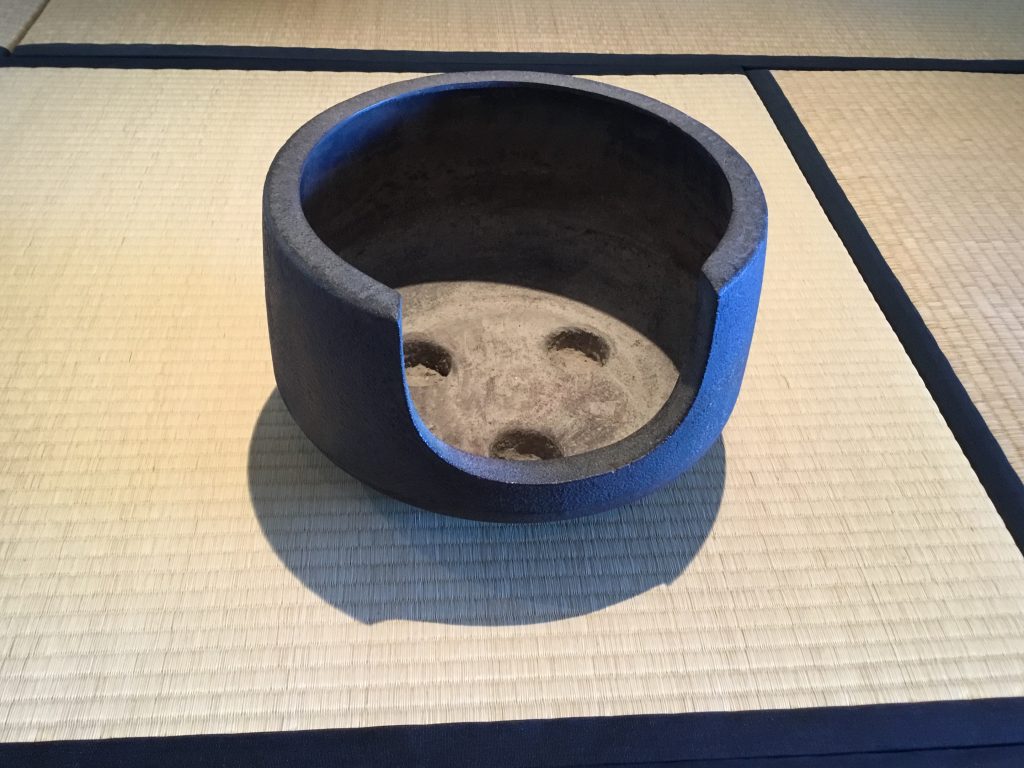
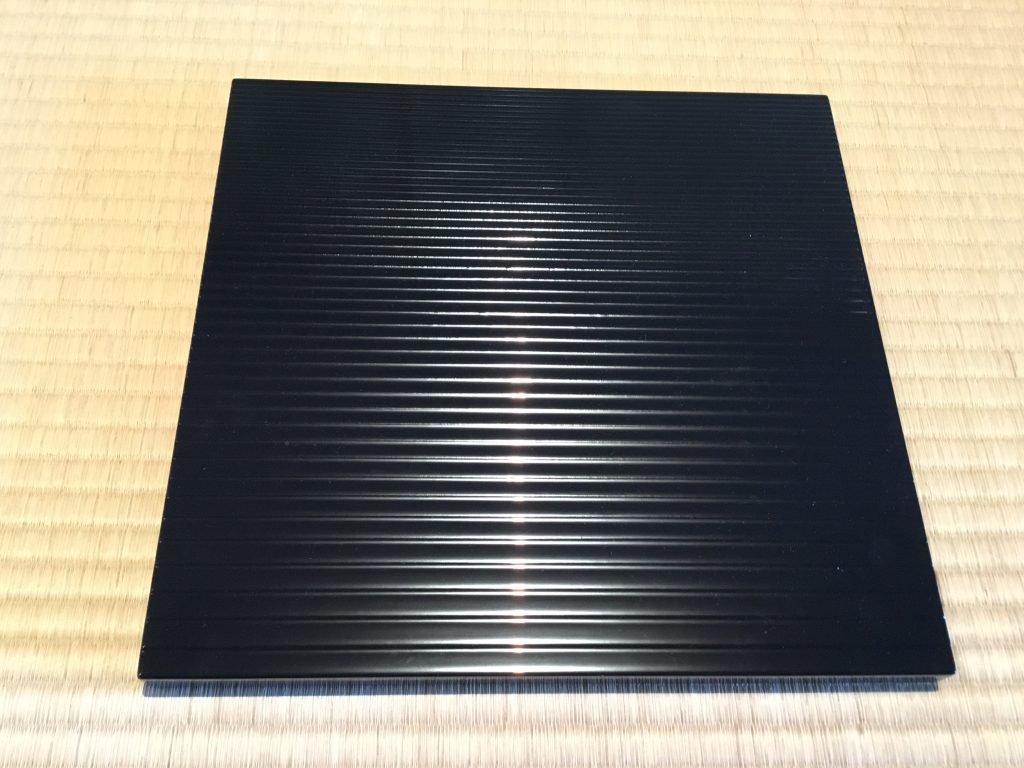
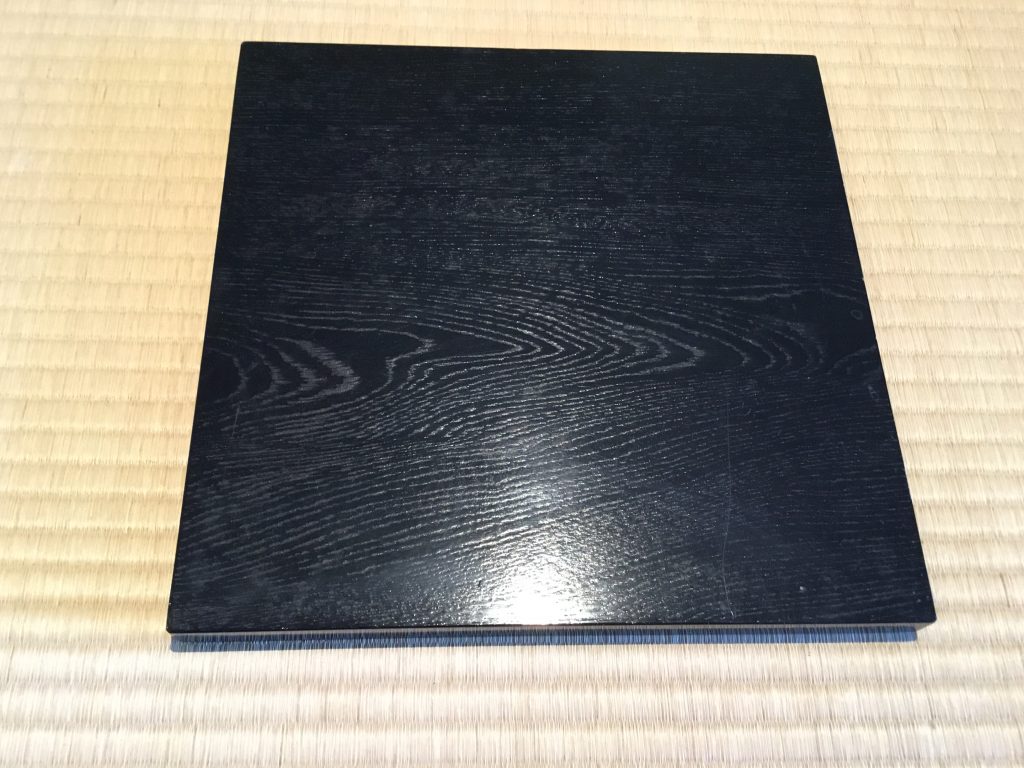
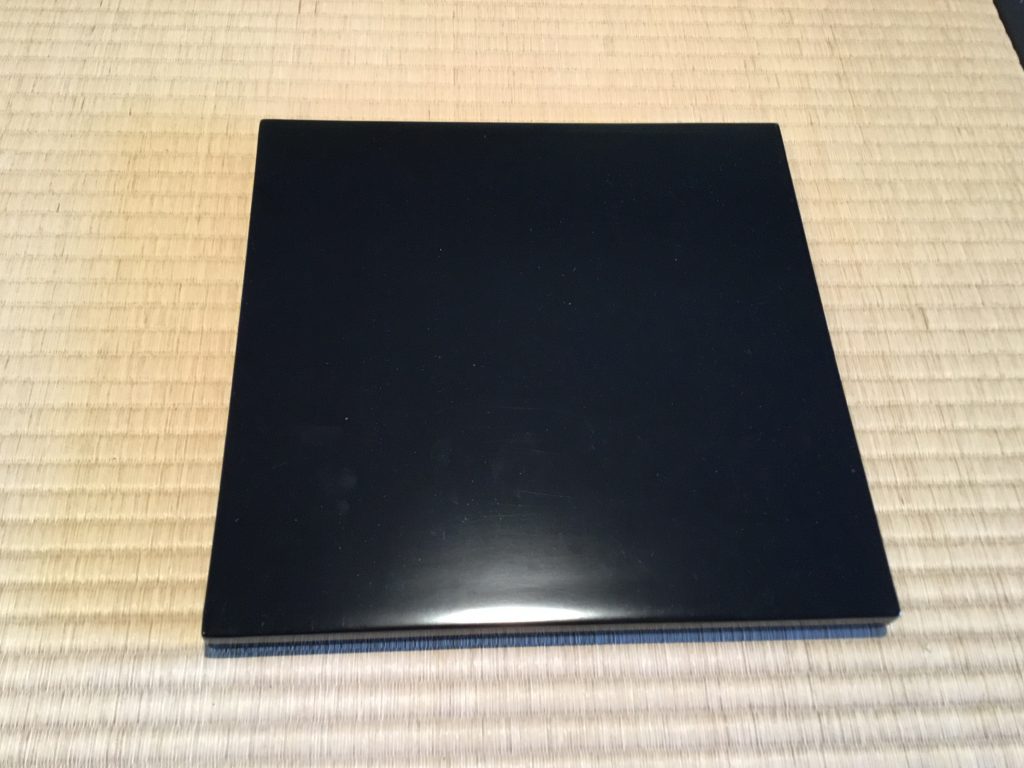
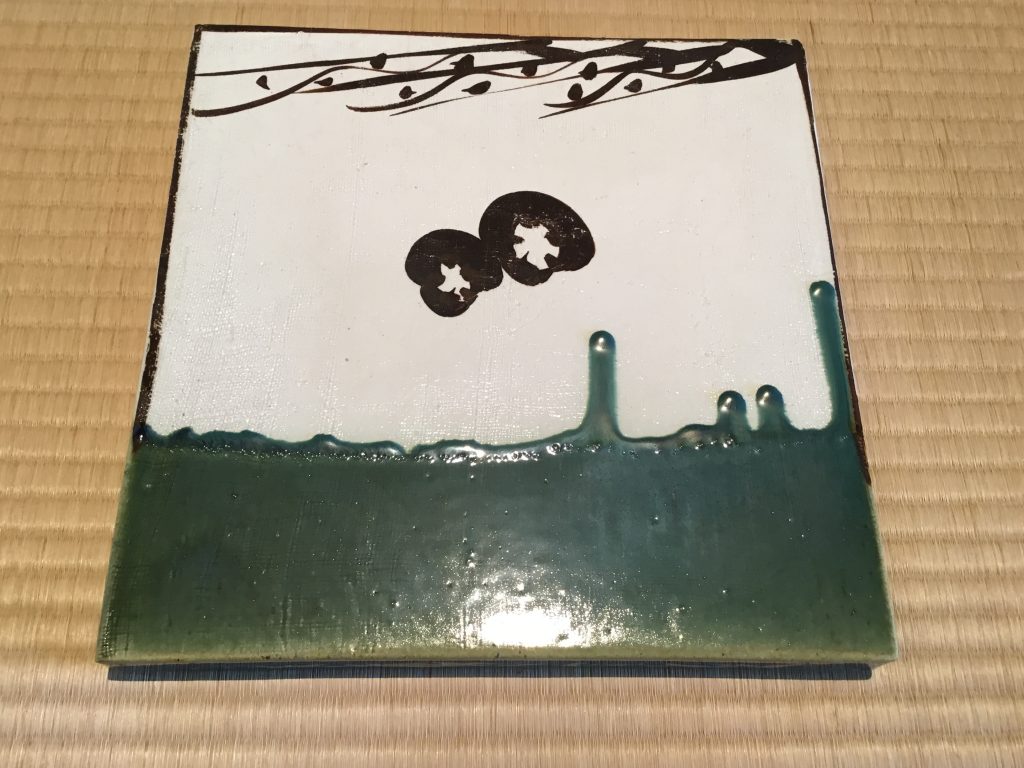
炉 ro is a sunken hearth and produces heat to boil water and warm up the room. Room heater function is important during cold winter, that is why it is placed between the guests and the host.However, this function is not needed any more in late spring. 透木釜 sukigi-gama is often used during the last couple of weeks of April in Japan, just before moving into 風炉 furo season. 透木釜 sukigi-gama is a large and rather flat 釜 kama with a wing/ wings and it sits on 炉壇 rodan. It is large enough to hide red hot fire.A pair of wooden sticks are placed between kama wing and 炉壇 rodan to protect 炉壇 rodan and to improve air circulation. See Photo 2. 平蜘蛛 hiragumo-gama and 平丸釜 hiramaru-gama have a wing like Saturn’s ring. While 裏甲釜 uragou-gama has detachable wings. See Photos 1 and 4. It can be used as a usual kama without wings. This 裏甲釜 uragou-gama has a 共蓋 tomo-buta ( kama lid made of cast iron ) with 掻立釻 kaitatekan handle. It usually sits up at the front, and it is flipped back with 茶巾 chakin when 茶巾 chakin sits on the lid. See Photo 3. Several different timbered 透木 sukigi are available.利休好 Rikyu-gonomi—- 朴 hou ( magnolia)宗旦好 Soutan-gonomi—- 桐 ( paulownia)竺叟好 Chikusou-gonomi—- 桜 ( cherry wood )圓能斎好 Ennousai-gonomi—-梅 ( plum wood )
透木釜 sukigi-gama is used in mid summer to hide red hot fire in 風炉 furo as well.
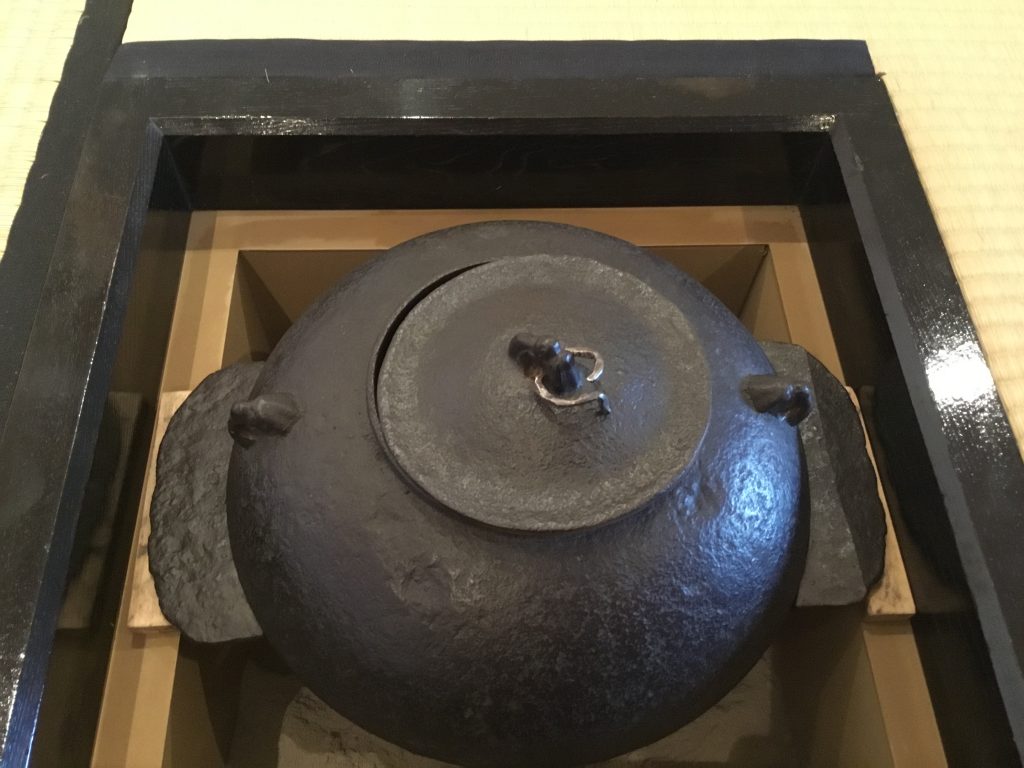
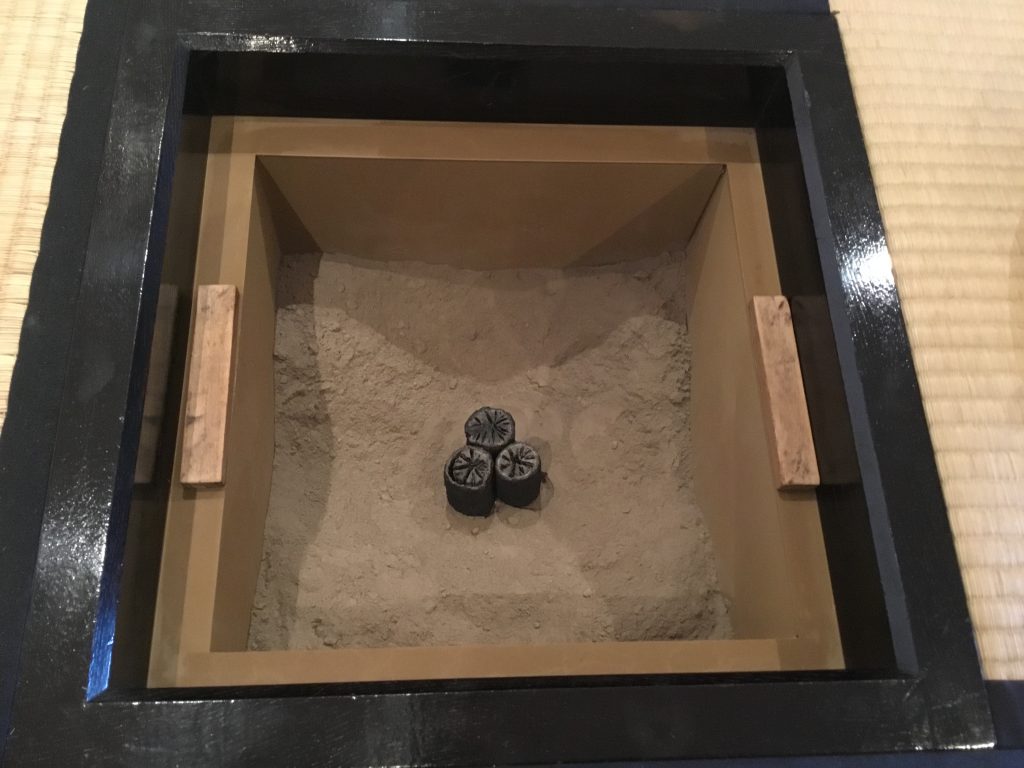
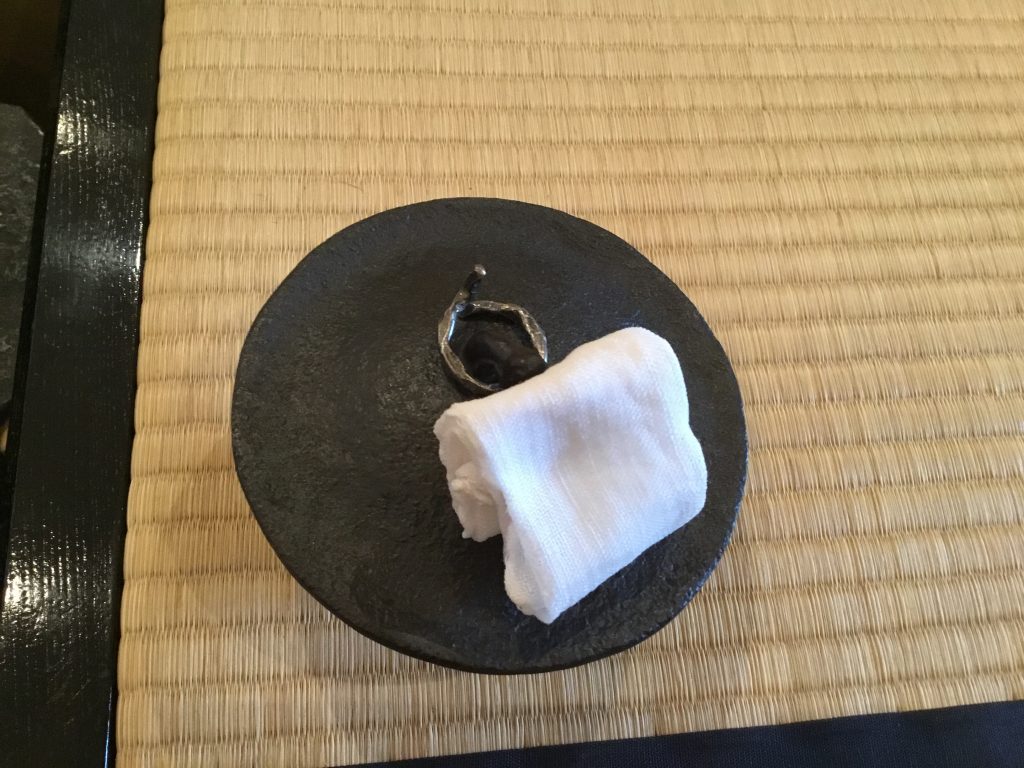
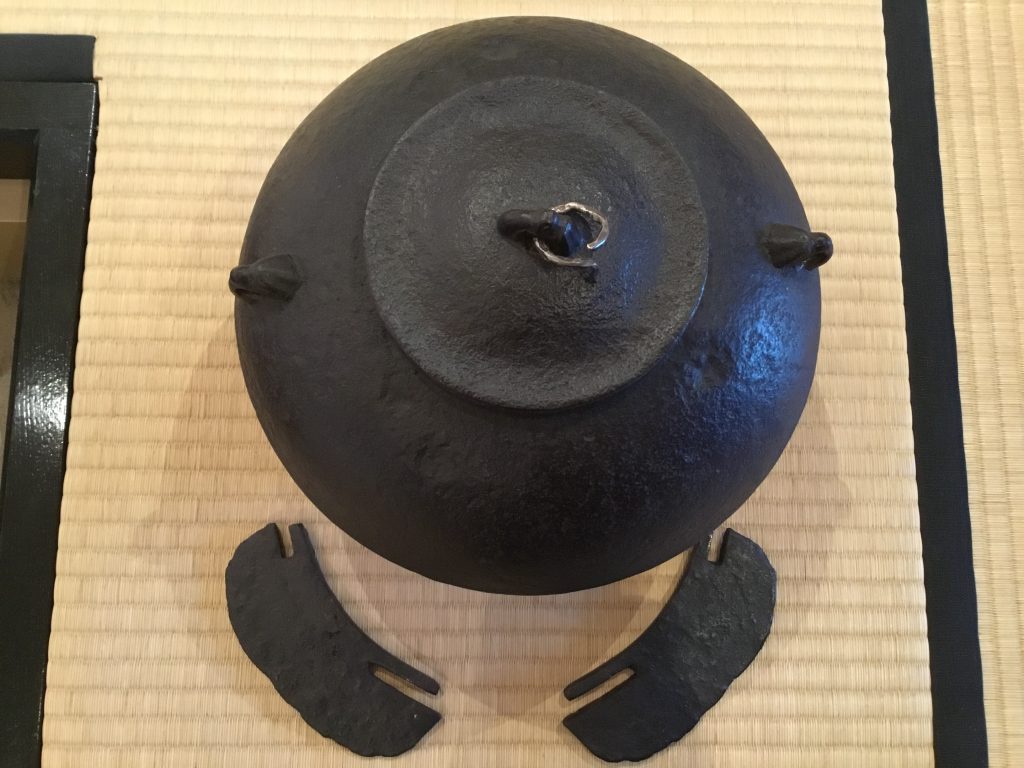
There are some signs of spring arrival. 東風 kochi ( strong easterly wind ) is one of them. 釣釜 tsurigama ( hanging kettle ) is used in March to mid April in Japan. Gently swaying 釜 kama reminds us of 東風 kochi.
五徳 gotoku ( kama stand ) is removed from 炉 ro, a chain is hung from a hook called 蛭釘 hiru-kugi ( leach shaped hook ) on the ceiling and 釜kama is hooked on the chain with a handle called 弦 tsuru. Rather small and cylindrical 釜kama such as 筒釜 tsutsu-gama, 雲龍釜 unryuu-gama, 鶴首釜tsurukubi-gama, etc. is suitable for this. Also 五徳蓋置 gotoku-futaoki can be used, because real 五徳 gotoku is not in 炉 ro.
濃茶点前 koicha-demae and 薄茶点前 usucha-demae are as usual. When 釜 kama sways too much, it can be settled by holding at the 鐶 kan with both hands. 炭手前 sumi- demae needs extra steps to avoid damaging 炉縁 robuchi and 炉壇 rodan, and not to let hanging chain intervene your views.
